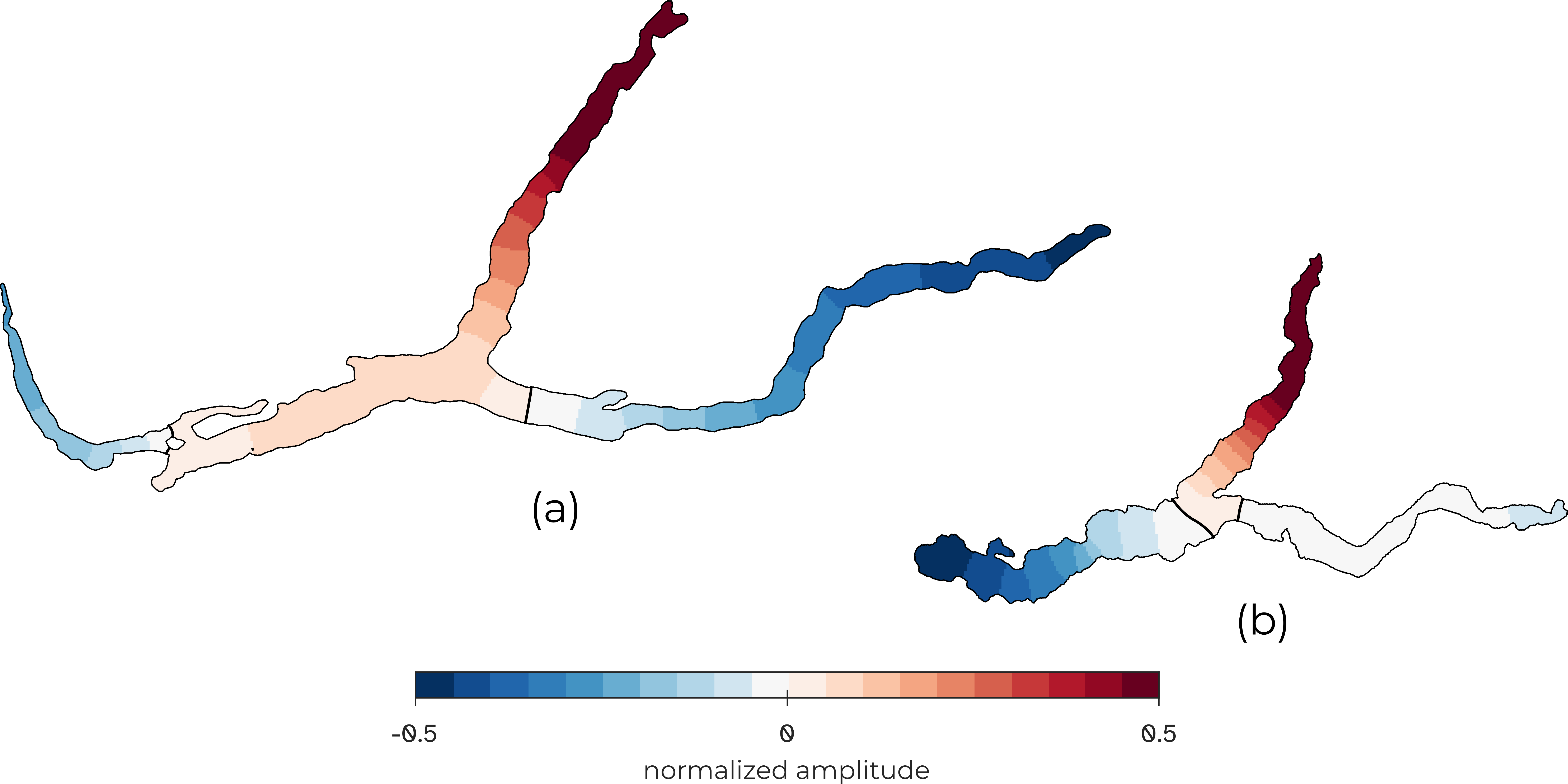My masters degree at the University of British Columbia focused on the study of lakes, and I maintain an interest in research on inland and coastal waters.
My work at UBC focused on the role of lake geometry in controlling the free barotropic response, specifically for multi-armed lakes. I developed a simple analytical model that predicts coupling/decouping between the arms of the lake (Brenner & Laval, 2018), and tested it by comparing with a finite-element model (e.g., fig. 1) and observations from Quesnel Lake, in Canada, and Lake Como, in Italy.

Through my PhD, I was an active member of the Environmental Fluid Mechanics group at the University of Washington, which includes researchers with a strong focus on coastal oceangraphy, amoung other topics. While my PhD research never involved coastal work, I nonetheless involved myself in it where I could, including attending the Estuarine and Coastal Dynamics Summer School and participating in some coastal fieldwork in the Salish Sea.
In the future, I would be happy to bridge some of my ongoing research in ice-ocean interaction with these topics, and welcome ideas for collaborations about, e.g., ice-covered lakes or ice-ocean interactions coastal settings.
Related publications
- Brenner, S. D., and B. E. Laval. 2018. Seiche modes in multi-armed lakes. Limnol. Oceanogr. 63: 2717-2726 doi:10.1002/lno.11001